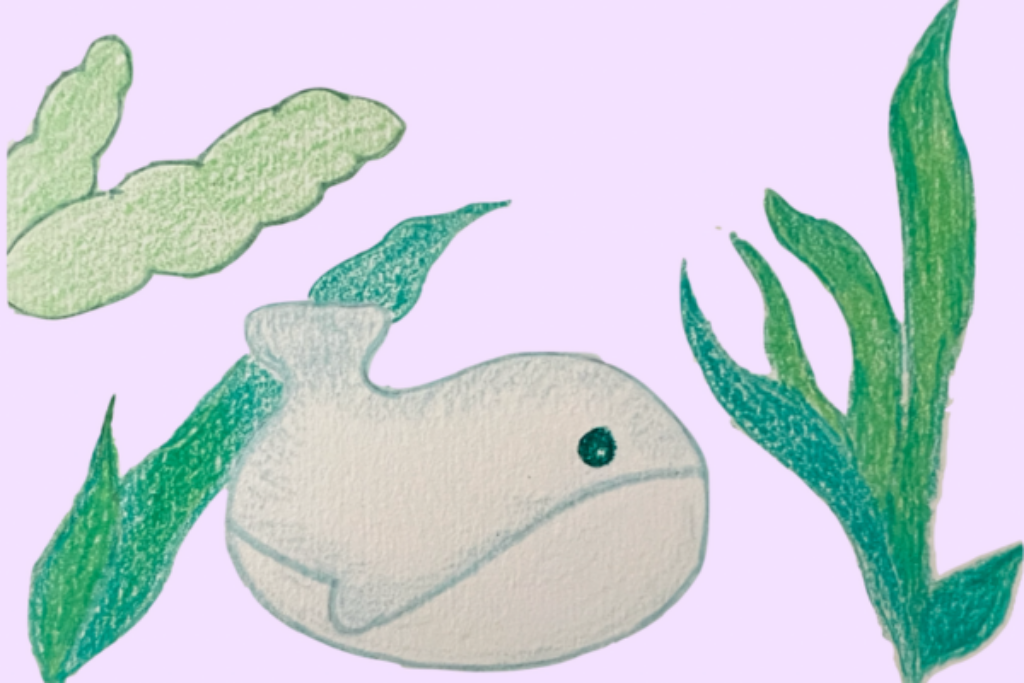Vegetables can be found both on land and in the sea. The most common ones are nori and kombu. Have you ever tried other “sea vegetables”? It’s not just about underwater gardens. Sea vegetables are actually edible seaweeds, and they often contain umami substances.
Are you ready to dive into the world of the popular edible seaweeds? Let’s go a delicious adventure in the world of seaweed and discover these miracles from the ocean.

Kombu / Kelp
Kombu, also known as kelp, is an essential superfood for making Japanese dashi broth. It has a rich, deep sea flavour with a subtle sweetness. Kombu is one of the strongest umami seaweeds because it contains a large amount of natural glutamate. The main types of kombu used in Japanese cuisine include Rausu kombu, Ma kombu, Rishiri kombu, and Hidaka kombu. Among them, Rausu kombu and Ma kombu are the richest in umami compounds. Kombu plays a key role in enhancing the flavour of Japanese plant-based dishes.
Wakame
Wakame has a fresh, slightly salty taste with a sweet sea flavour. Its texture is soft and smooth. It is commonly used in salads and added to miso soup after being chopped. Wakame enhances the flavour of soups or salads, bringing a richer umami taste.
Hiziki
The chewy Hiziki has a strong sea salt flavour with a hint of sweetness. Hiziki can be used in salads, stews, or fried rice. Its salty and savoury taste enhances the flavour of stews or fried rice, adding depth to the dish.
Dulse
Dulse is soft. *According to information from Great British Chefs, fresh dulse has a delicate and smooth texture, with a subtle salty and savoury taste. When it is dried, it develops a charming smoky flavour, which then transitions into a subtle sweet aftertaste, even with hints of liquorice. This unique flavour has attracted many top chefs. The name “Dulse” comes from its palm-like shape, resembling open fingers. This seaweed is officially listed as a “Forgotten Food” and is included in the “Ark of Taste” by Slow Food UK, symbolising the preservation and appreciation of traditional culinary heritage.
Nori
Nori is one of the most commonly seen seaweed ingredients in everyday life. You can find these green little sheets in sushi, Raman soups, and nori snacks. Its texture is thin and crispy, but when it is exposed to heat or soup, it softens. Nori has a marine flavor, slightly salty with a hint of sweetness.
Today’s seaweed feature shows us that sea vegetables are not only delicious but also natural umami boosters, enhancing the flavour complexity of dishes. Whether it’s Japanese, Korean, or European cuisine, seaweed is the secret weapon for adding umami. Next time you cook, don’t forget to add some seaweed and let the natural deliciousness shine on your table.
Irish moss
Some people call Irish moss as the “collagen” of the seaweed world. It contains natural gelatin, which can absorb the flavours of broths or drinks, making dishes not only healthy but also rich in savoury taste. # In the Caribbean, Irish moss pudding is a popular dessert, often flavoured with cinnamon and vanilla, and topped with milk and rum. In Ireland and Scotland, similar traditional puddings and milk drinks are also enjoyed. This unique seaweed is not only delicious but also a nutritious ingredient.
Ogonori
Ogonori is a red algae. ** It is usually eaten pickled or used in salads. It is actually one of the ingredients for agar, a jelly-like substance that can be considered the vegetarian version of gelatin. When it is heated, these components are released.
Sea grapes
Fresh sea grapes are like little caviar. When you bite into them, the sea’s fresh taste bursts in your mouth, instantly bringing the flavour of the ocean. This ingredient is very common in Okinawan cuisine. As a flavour enhancer, it perfectly combines the taste of the sea with umami, making it a true “ocean delicacy.” Taking a bite feels like tasting an exquisite bowl of seafood soup.
Agar
Agar is a great helper in plant-based desserts. It is soft and refreshing like jelly. It has no flavour on its own but can absorb the taste of soups and broths.
Sea lettuce
Sea lettuce ^is a type of seaweed, usually used for its medicinal properties.
Reference
“On Food And Cooking”, written by Harold McGee, published by Scribner
Umami Information Center Website
* Great British Chefs Website
** Michelin Guide Hong Kong Website
# Smithsonian Ocean Website
^ Wikipedia Website



